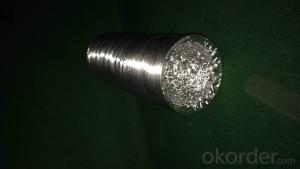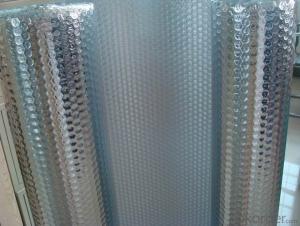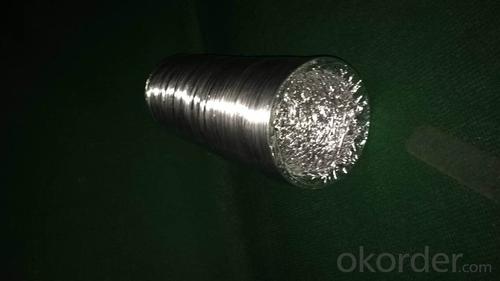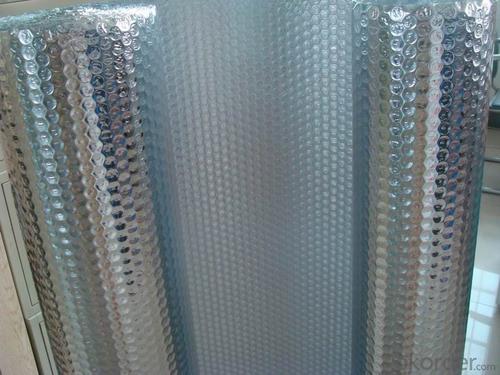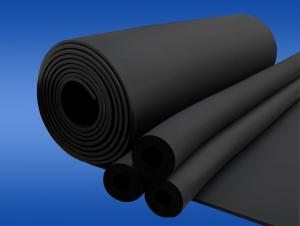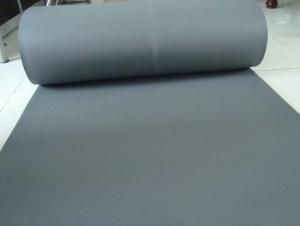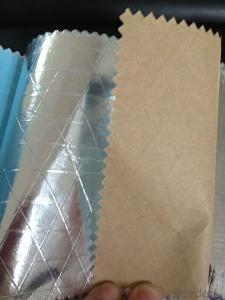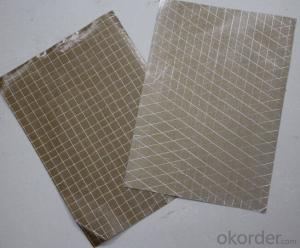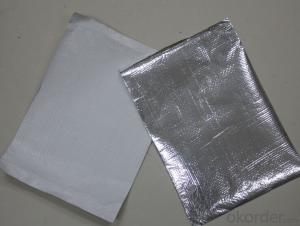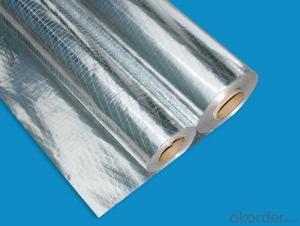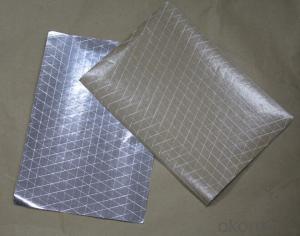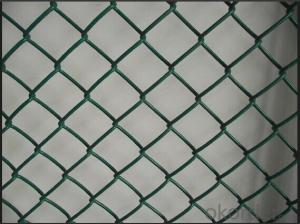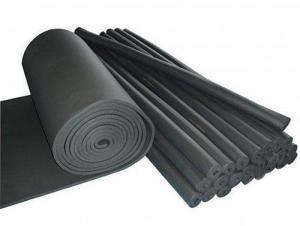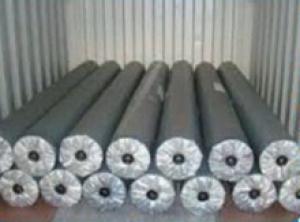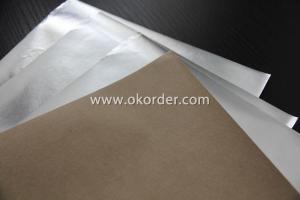Aluminum Foil Facing Flexible Ducts and Bubble Foil AL+LDPE AL+PET+LDPE
- Loading Port:
- Tianjin
- Payment Terms:
- TT OR LC
- Min Order Qty:
- 12 m²
- Supply Capability:
- 30000 m²/month
OKorder Service Pledge
OKorder Financial Service
You Might Also Like
).Raw material for Aluminium: 1235-0, 8011
Raw material for PET: New PET ,OPP is also available
2).Different kinds:
| structure | Normal laminated thickness | Width | Length | Color | ID | OD | Packin |
| AL+PET+LDPE | 7umAlu+15umPet+3umGlue | 6mm-1000mm as your required | 500m-7000m | Silver blue bronze black others | 2"or3" | 250mm-600mm | polybag caron pallet
|
| 9umAlu+12umPet+3umGlue | |||||||
| AL+PET+AL | 6umAlu+15umPet+6umAlu+6umGlue | ||||||
| PET+AL+PET | 15umPet+7umAlu+15umPet | ||||||
| AL+PET+EAA | 7umAL+15umPET+25umEAA+6umglue | ||||||
| AL+PET+AL+EAA | 7umAlu+15umPET+7umAlu+25umEAA+9umglue | ||||||
| PET+PET | 15umPet+15umPet +3umGlue | ||||||
| Polyester Tape | 15um,18um |
3).Certificaton: SGS
4).Specifications:
The following is the single side aluminium mylar tape specifications for you take reference:
Description: Al+PET Tape(AL/myler Tape) | ||||
Composition:aluminium foil and polyester film | ||||
Structure | Thickness(um) | Proportion(g/m2) | Elongation(%) | Strength(N/15mm) |
6um AL/12um PET | 20 | 36 | 30 | 2.7 |
7um AL/15um PET | 25 | 43 | 35 | 2.7 |
7um AL/20um PET | 30 | 50 | 35 | 3 |
9um AL/12um PET | 25 | 45 | 30 | 2.7 |
9um AL/15um PET | 30 | 49 | 35 | 3 |
9um AL/20um PET | 35 | 55 | 35 | 3 |
9um AL/25um PET | 38 | 62 | 35 | 4 |
12um AL/12um PET | 25 | 53 | 20 | 2 |
12um AL/15um PET | 30 | 57 | 20 | 3 |
12um AL/20um PET | 35 | 63 | 30 | 4 |
15um AL/15um PET | 30 | 65 | 20 | 3 |
25um AL/15um PET | 45 | 92 | 20 | 3 |
30um AL/25um PET | 60 | 119 | 20 | 3 |
30um AL/30um PET | 65 | 126 | 20 | 5 |
40um AL/30um PET | 75 | 153 | 20 | 5 |
40um AL/38um PET | 80 | 163 | 20 | 5 |
50um AL/25um PET | 90 | 173 | 20 | 5 |
50um AL/50um PET | 100 | 207 | 35 | 6 |
Above values refer to our current production and must be intended as average values | ||||
The reference is not including all specification. | ||||
- Q: The user is asking if they can reuse their old aluminum foil facing to create new ones once it becomes worn out.
- <p>No, you cannot create new aluminum foil facings from old, worn-out ones. Aluminum foil facings are typically made from a specific type of aluminum that is bonded to a substrate. Once it wears out, the aluminum layer is compromised and cannot be reused to make new facings. Recycling old aluminum foil is the best option to reduce waste and conserve resources. You can recycle aluminum foil, which will then be processed and turned into new aluminum products.</p>
- Q: This question asks for clarification on the distinction between two types of aluminum products: aluminum foil facing and aluminum foil sheet.
- <p>Aluminum foil facing is a thin layer of aluminum laminated to a substrate, typically used in construction for insulation and moisture barrier purposes. It provides a reflective surface that can enhance energy efficiency by reflecting heat. On the other hand, aluminum foil sheet is a flat, flexible material made of pure aluminum or aluminum alloy, commonly used in cooking, food packaging, and crafts. It is not bonded to any other material and is available in various thicknesses and widths. The primary difference lies in their applications and composition; foil facing is part of a composite material for construction, while foil sheets are standalone materials for a variety of uses.</p>
- Q: Is it possible to use aluminum foil with a reflective surface for storing fruits and vegetables?
- <p>Aluminum foil facing can be used for storing fruits and vegetables, but it's not the best choice. Aluminum foil is not breathable and can cause condensation, leading to spoilage. It's better to use perforated or micro-perforated films that allow for air exchange while keeping light and moisture out. These films help maintain the freshness of produce by slowing down the respiration process and reducing water loss.</p>
- Q: Can aluminum foil be shaped into a roasting rack?
- <p>Yes, you can create a makeshift roasting rack using aluminum foil. To do this, take two long sheets of aluminum foil and fold them back and forth to create a series of parallel ridges. These ridges will provide support for your roast while allowing air to circulate underneath. Place the folded foil on a baking sheet, spacing the ridges evenly apart to create a grid-like pattern. Your roast can then be placed on top of this foil 'rack' for cooking. This method is a simple and effective way to elevate your food for better heat distribution and crisping.</p>
- Q: What are the chemical characteristics of the side of aluminum foil that faces outwards?
- <p>The chemical properties of the aluminum foil facing outward are primarily determined by its elemental composition, which is aluminum (Al). Aluminum is a lightweight, soft, and malleable metal with a silvery-white appearance. It is highly reactive and readily forms a thin, protective oxide layer (aluminum oxide) when exposed to air, which prevents further oxidation. This oxide layer is what gives aluminum foil its resistance to corrosion and its shiny appearance. Aluminum is also a good conductor of heat and electricity. The facing side of the aluminum foil may have slight differences in properties due to the manufacturing process, but fundamentally, it remains chemically similar to the rest of the aluminum foil.</p>
- Q: Is it possible to use a single piece of aluminum foil for cooking or baking multiple times?
- <p>While aluminum foil is a versatile kitchen tool, it is not recommended to reuse a single piece of aluminum foil for cooking or baking multiple times. Aluminum foil can tear or become thin with use, which may compromise its effectiveness and potentially allow food to stick or contaminate the foil. Additionally, repeated use can lead to the accumulation of food particles and bacteria, posing a risk to food safety. It's best to use a fresh piece of aluminum foil for each cooking or baking session to ensure hygiene and椋熷搧瀹夊叏.</p>
- Q: This question asks for a comparison of the benefits and drawbacks associated with the use of aluminum foil facing in various applications.
- <p>Aluminum foil facing offers several advantages, including excellent heat reflection, which can improve insulation and energy efficiency in buildings. It also provides a moisture barrier, which can protect against water damage and mold growth. Additionally, aluminum foil facing is lightweight, easy to install, and resistant to corrosion. However, there are disadvantages such as its limited strength and durability compared to other materials, making it prone to punctures and tears. It can also be less aesthetically pleasing and may require additional protective layers for long-term use. Furthermore, improper disposal can contribute to environmental concerns due to its non-biodegradable nature.</p>
- Q: This question asks about the various types of aluminum foil facing that can be found in the market.
- <p>Aluminum foil facing is commonly used in construction for insulation and moisture protection. The different types available on the market include: 1) Plain Foil Facing, which is a simple, smooth aluminum surface; 2) Embossed Foil Facing, featuring a textured pattern for added strength; 3) Reinforced Foil Facing, which incorporates additional materials for enhanced durability; 4) Coated Foil Facing, where the aluminum is coated with other substances to improve performance; and 5) Laminated Foil Facing, which combines aluminum with other materials for specific applications. Each type serves different purposes and has unique properties that cater to various construction and industrial needs.</p>
- Q: What are the considerations or safety measures one should take into account when using aluminum foil in the kitchen for cooking purposes?
- <p>When using aluminum foil for cooking, it's important to avoid direct contact with acidic or alkaline foods as this can cause the foil to corrode and potentially release aluminum into the food. Also, refrain from using foil with non-stick cookware as it can damage the non-stick surface. Ensure that the foil is not wrapped too tightly around food, especially when cooking in the oven, to prevent uneven cooking. Avoid using foil with sharp edges or corners that could tear. Lastly, do not use aluminum foil in the microwave for long periods or with high power as it can cause sparks or fires. Always follow the manufacturer's guidelines for safe use.</p>
- Q: This question asks for methods to clean the aluminum foil facing, which is a common household material used for cooking and food storage.
- <p>To clean aluminum foil facing, start by removing any visible debris. Use a damp cloth or sponge with mild dish soap to wipe the surface gently. Avoid abrasive materials that could scratch the foil. If there are stubborn stains, you can use a mixture of water and vinegar (1:1 ratio) to dampen the cloth. Wipe the surface and let it air dry. For baked-on food, you can use a plastic scraper or a soft nylon brush to gently remove it. Always remember to handle aluminum foil carefully to prevent tearing or damaging the surface.</p>
Send your message to us
Aluminum Foil Facing Flexible Ducts and Bubble Foil AL+LDPE AL+PET+LDPE
- Loading Port:
- Tianjin
- Payment Terms:
- TT OR LC
- Min Order Qty:
- 12 m²
- Supply Capability:
- 30000 m²/month
OKorder Service Pledge
OKorder Financial Service
Similar products
Hot products
Hot Searches
Related keywords
